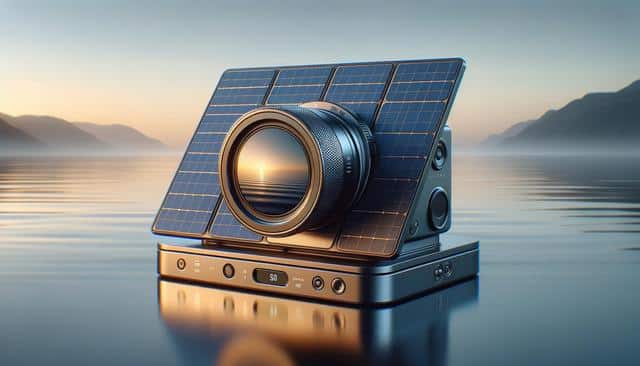Understanding the Rise of Solar Cameras
In recent years, the adoption of solar cameras has seen significant growth. These advanced devices are transforming how we secure our homes and properties. Unlike traditional surveillance systems that rely on electric power or extensive cabling, solar cameras harness the power of the sun. This feature not only reduces energy costs but also provides an environmentally friendly alternative, contributing to the sustainability movement. Whether at home or on a farm, the convenience and efficiency of solar cameras are unmatched. They offer a seamless solution for those who face challenges with power outages or distant network locations.
How Solar Cameras Work
Solar cameras operate by utilizing solar panels that convert sunlight into electrical energy. This energy is stored in built-in batteries, allowing the cameras to function even at night or during cloudy days. Key components of a solar camera include:
- Solar Panel: Captures sunlight and converts it into electrical power.
- Battery: Stores energy for use during non-sunny periods.
- Camera Unit: Equipped with lenses and sensors for capturing footage.
- Network Connection: Facilitates remote access to surveillance feeds.
The technology behind solar cameras ensures reliable and continuous surveillance coverage without the need for traditional power sources, making them a practical choice for many users.
The Benefits of Solar Cameras
Choosing solar cameras for surveillance comes with numerous advantages. These benefits make them a preferred choice for enhancing security in various settings. Some of these advantages include:
- Cost-Effective: No need for electricity reduces energy bills significantly.
- Easy Installation: No wiring required simplifies setup and relocation.
- Environmentally Friendly: Utilizes renewable energy to minimize carbon footprint.
- Remote Monitoring: Access live feeds from anywhere via smart devices.
- Weather Resilience: Designed to withstand various weather conditions, ensuring durability and longevity.
These features highlight why solar cameras are becoming a top option for those looking to improve their security infrastructure while supporting sustainability.
Installation Tips for Solar Cameras
Installing solar cameras can be straightforward, but following best practices can enhance their performance. Here are some tips to consider:
- Placement: Ensure the solar panel is positioned to receive maximum sunlight exposure.
- Angle Adjustment: Adjust the camera angle for optimal surveillance coverage.
- Weatherproofing: Choose weather-resistant models to withstand environmental challenges.
- Testing: Regularly check batteries and panels to maintain efficiency.
By following these guidelines, you can ensure that your solar cameras operate effectively, providing reliable security coverage for your property.
Choosing the Right Solar Camera
With various models available in the market, selecting the right solar camera can seem daunting. However, focusing on specific criteria can streamline the decision-making process. Consider factors like:
- Resolution: Higher resolution cameras provide clearer images.
- Battery Life: Look for models with long-lasting battery performance.
- Connectivity: Ensure compatibility with your network for seamless monitoring.
- Additional Features: Consider cameras with motion detection or night vision capabilities.
By evaluating these aspects, you can choose a solar camera that meets your specific needs and enhances your property’s security effectively.
Conclusion
Solar cameras represent a groundbreaking innovation in the realm of surveillance technology. For homeowners and farmers alike, these devices offer a practical, eco-friendly solution to security concerns. By leveraging solar energy, they eliminate the dependency on traditional power sources, making them a sustainable choice for the future. As technology continues to evolve, solar cameras are poised to become a cornerstone in modern surveillance systems, offering peace of mind and reliable protection.
